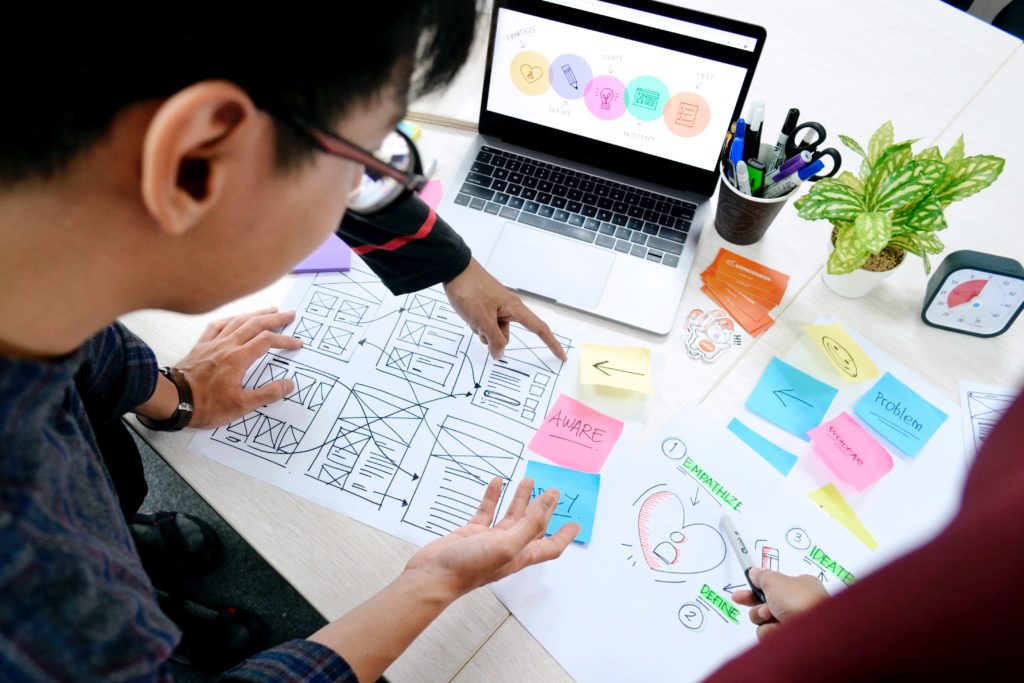AEC marketers spend countless hours duplicating data entry across platforms, or manually reformatting project sheets and resumes to meet a new proposal’s needs. This lack of interconnectivity is not only tedious, it’s prone to error, and makes it harder for your team to visualize the big-picture.
Fortunately, OpenAsset boasts a range of out-of-the-box integrations that enable you to streamline workflows, promote creativity, and foster strategic thinking. This guide has everything you need to utilize those integrations and enable your team to do their best work.
Most Important Digital Asset Management (DAM) Integrations for AEC Firms
AEC firms love to boast about the latest and greatest technology at their disposal. Enabled with advanced ERP, CSM and DAM systems, these firms, theoretically, have everything they need to accomplish their goals, and match the ambition of their clients.
Unfortunately, these systems are rarely integrated, leaving it up to your team to manually enter data into disconnected platforms. This process is tedious, time consuming, and damaging to the creative process.

Integrations solve this problem, by enabling the systems in your tech stack to transfer data between a range of document creation and AEC-specific tools, like:
- Procore,
- Unanet,
- Deltek,
- Adobe InDesign,
- Affinity,
- Templafy, and
- The Microsoft Suite.
We’re going to delve into these integrations to determine which are the most beneficial to your firm, and which are likely to yield the best results. Let’s get started!
Five Best DAM Integrations for AEC Firms (Plus Advice on How to Use Them)
A digital asset management solution is a powerful tool to store, organize, share and manage the digital assets you use to conduct operations and grow your business. But what if your DAM could be made better – improved with a suite of tools that makes your team even more powerful?
Below we discuss the most important DAM integrations currently available, and which are likely to provide the greatest benefit to your firm.
1. Sync Your CRM and ERP Systems to Create Single Source of Truth
When data is disseminated across multiple systems, it creates a challenge for anyone in need of that information. A small edit on one platform may result in the need to change data across two or three other systems, and before you know it you can’t remember which systems are up-to-date and which information is accurate.
If this sounds familiar, your firm is in desperate need of a single source of truth, i.e. a central storage location, where files are made easily accessible to those who need them. There are a number of single-source solutions on the market, such as Google Drive or Dropbox, but adding yet another storage solution to your techstack will only exacerbate the current issue.
How to Integrate Your CRM and ERP Systems to Ensure Data Reliability
The solution is to integrate your CRM and ERP systems to ensure that the data fed into each system is reliable and up-to-date. The integrity of that data is thus ensured and provides confidence to your sales and marketing teams.
The next step is to utilize OpenAsset’s connectors to automatically feed this data into existing OpenAsset projects, and/or create new ones. This process automates the creation of a searchable library of assets. Let’s take a look at how this might work in a real-world context.
How to Automate the Creation of Searchable Digital Assets
Imagine that your firm is in the process of creating a pitch for a new project, thus creating a “Prospect” account in your CRM and ERP (we’ll use Unanet CRM for this example). Soon after you hear back from the prospect with news that you have won the pitch – great job!
As a result, the opportunity shifts to “Won”, meaning a new “Project” will be created in Unanet CRM. Since you’ve already set a custom filter to capture projects that meet the specified criteria, a new Project is also created in your OpenAsset system.

Your fields have been mapped between systems so that keywords and fields are auto-populated in OpenAsset. At this point, filters can be utilized to exclude project data that you don’t wish to appear in OpenAsset. Next, you assign employees to the “Project”, which is automatically reproduced in the Employee Roles section of your OpenAsset system, and added to their project portfolio.
Meanwhile, any changes throughout the lifecycle of the project only need to be made in Unanet, as these are automatically pushed to your OpenAsset system via a daily sync. If a project has multiple phases a new OpenAsset project can be created for each phase, and can be linked back to the overarching project, via a dedicated custom field.

While the exact processes may differ slightly between platforms, the above example represents a typical scenario. The peace of mind attached to this process is invaluable, as you now only have input data once, therefore improving the reliability of information across platforms. For more information on the CRM and ERP system integrations, we recommend the following resources.
2. Upload Progress Images With the Procore Connector
While the CRM and ERP integrations described above aim to reduce the time spent on data input, OpenAsset’s integration with Procore aims to reduce the effort needed to upload images to your digital asset management system. We’ll continue with our previous example to understand these efficiencies.
How to Upload Progress Images With the Procore Connector
After utilizing your CRM / ERP to capture information about the client, you may decide to transition to a Project Management system, such as Procore, to manage the progress of the build.
As part of this process, your team may decide to upload images that document different stages of the project. Whether these are informal staff walkovers, or professional in-progress images, it makes sense to capture these in your DAM system, so they can be utilized for marketing purposes.
Fortunately, with the Procore integration, there’s no need to re-upload those images to OpenAsset. You can, instead, utilize granular filters to sift through your Procore images, and feed the suitable images into your OpenAsset projects. After wich, you can add your keyword and field data as normal.
To learn more about our integration with Procore, we recommend that you read the following case studies, which detail how AEC firms use the Procore connector to streamline their workflows. You can, alternatively, discover the full benefits of the Procore connector, by following the link.
3. Feed Images and Data Into Branded Documents
So far we’ve discussed the process of how to push data into your OpenAsset DAM, but now it’s time to consider how you can utilize integrations to draw data from OpenAsset into the rest of your tech stack.
Fortunately, these processes are made easy by a large range of out-of-the-box integrations and document-creation tools. Let’s delve into the process and how it affects the project pursuit lifecycle full circle.
How to Utilize Integrations to Push Data From OpenAsset into Your Tech Stack
Now that you can draw project data from your CRM/ERP and upload images from Procore, your OpenAsset system is now brimming with beautiful imagery and reliable, up-to-date information.
Soon it will be time to pitch for new business. To wow your prospective clients, your materials need to be formatted, stylish, and carefully tailored to your prospects’ needs. That means highlighting relevant projects and showcasing the experience of your team. That said, new opportunities come about quickly and there’s seldom enough time to prepare.
Fortunately, OpenAsset features custom templates that you can tailor, like branded project sheets, resumes, and PowerPoint presentations. Said templates make it easy to pitch for new business without the tedious reworking of documents. For more information on the document-creation tools that integrate with OpenAsset, follow the links below:
4. Streamline Workflows with the REST API and Zapier
Armed with Zapier and REST API, your firm can configure integrations with a wider range of platforms, including Instagram, Slack, WordPress, and more. For example, many clients utilize the REST API alongside OpenAsset to power their public-facing websites.
By creating rules that speak to OpenAsset fields, keywords, and ranks, these firms are able to automate the addition of new projects and even add related employee data and imagery. And that’s just a start – there are a host of creative ways OpenAsset users approach automation challenges. Done correctly, these automation save countless hours and reduce tedious workflows.
How to Get Started With OpenAsset Integrations
Integrations allow you to both automate the upload process and provide you with the tools you need to create beautiful, tailored documents from your OpenAsset DAM. In the process, they save you time, resources, and increase data reliability.
While many of the connectors described in this blog are free, such as Procore, InDesign, Affinity and Microsoft Suite, others, like Deltek, Unanet, and Templafy are paid add-ons. To learn more about these paid connectors, feel free to schedule a call with our renewals team, or your Customer Success Manager.



